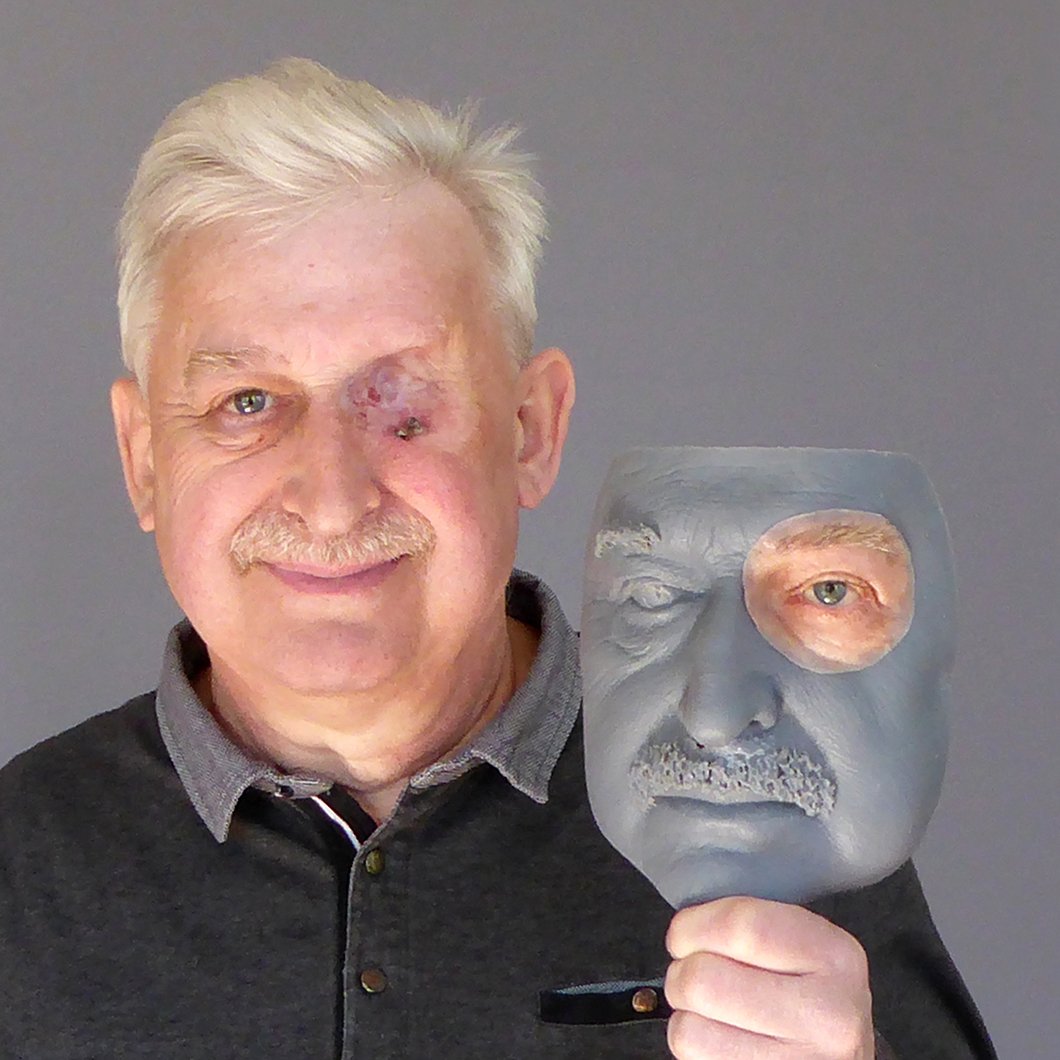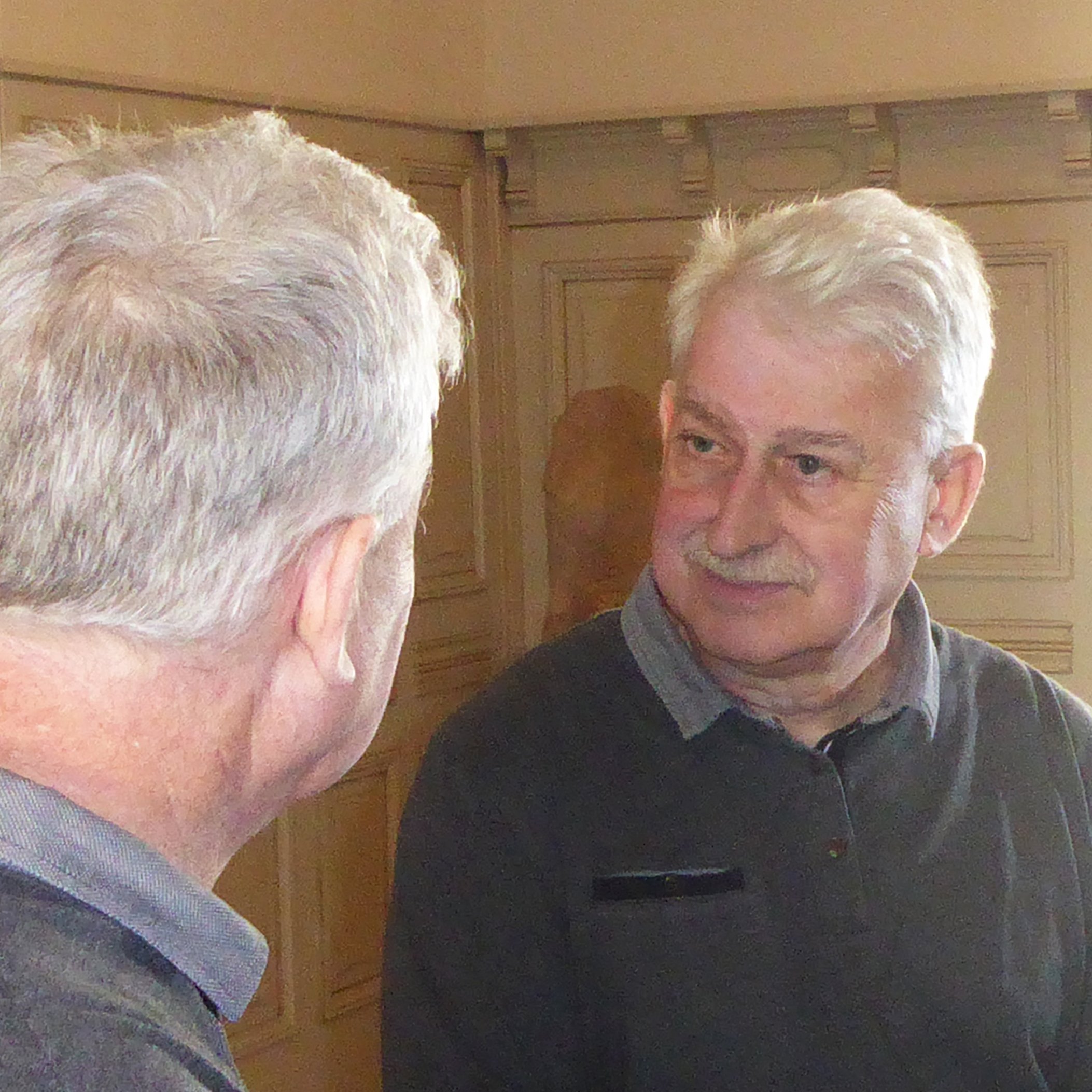


Left orbital prosthesis, attached using magnets.
“I am a photographer and one day one of my clients told me that I had something in my eye. I hadn’t noticed a thing. I went to see a doctor and had a scan. As it turned out, it was serious. Professor George from the Ophthalmological Department in Nancy told me it was adenoid cystic carcinoma of the left lachrymal gland. An operation was necessary - the eye was dead. There was no other option. Everything occurred so fast that I didn’t have time to realise what was happening to me, and I still didn’t feel any pain.
I was operated on in July 2010. When I came out of hospital, the most annoying thing was being stared at and asked questions about my dressing. It put me in the category of sick people. My clients’ questions were recurrent and hard for me to accept.
I had radiotherapy treatment until November, and then I was sent to the anaplastologist, Anne-Marie Riedinger, who explained to me the different stages of facial reconstruction using a prosthesis. I had to wait for another year before the wound was completely healed and implants were finally set in place by Dr Patrick Hémar from the surgical ENT department in Strasbourg hospital.
Having a prosthesis immediately changed people’s attitude towards me. I once again belonged to the category of normal people. You get used to it and sometimes my grandchildren, who have never had any problem with my prosthesis, have to remind me that I’ve forgotten to put my eye in!
You start living again, your morale comes back. I live the same life as I did before, I go to spas, I walk a lot. On the other hand, I drive less, especially at night. Otherwise, I quickly got used to seeing out of a single eye, but sometimes I still miss my glass when I pour out a drink, but when I hold the glass in one hand it doesn’t happen that often.”
